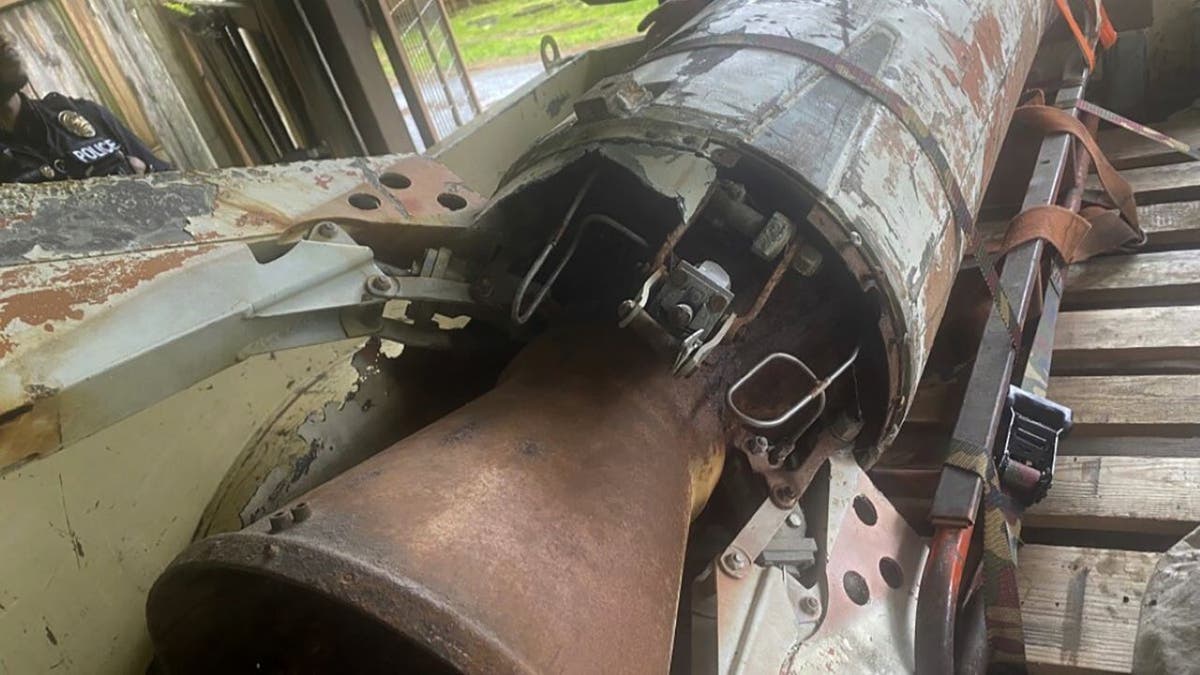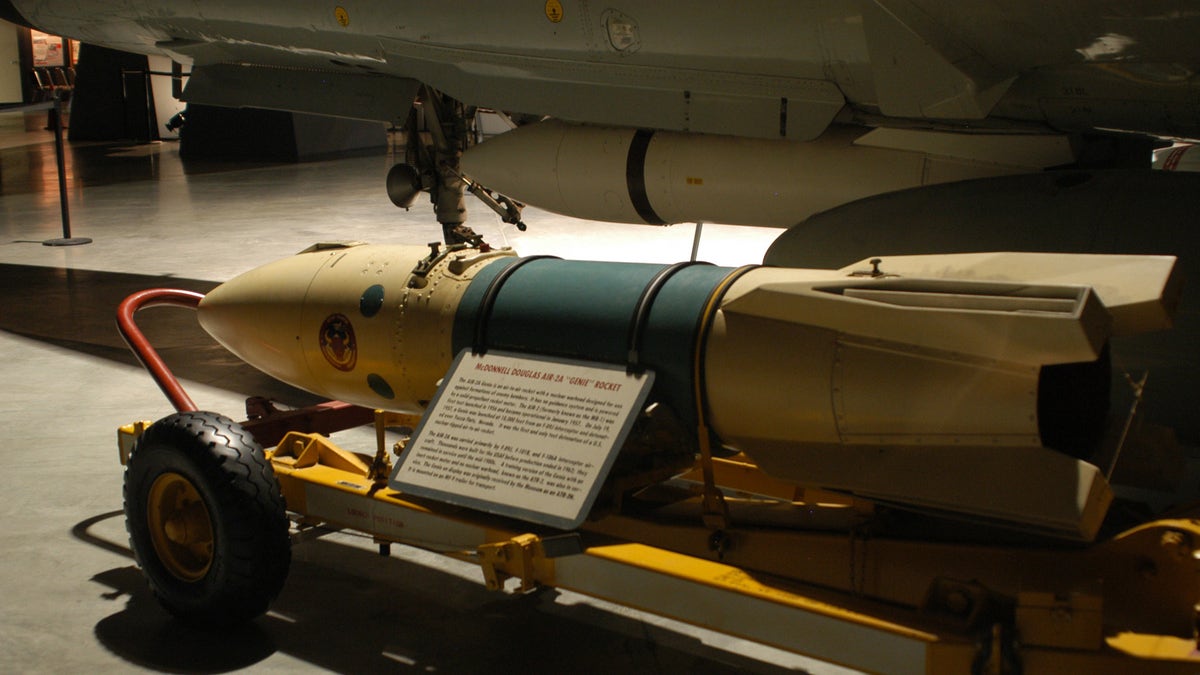Washington state authorities recently discovered a Cold War-era inert rocket sitting in a deceased resident’s garage.
The military-grade rocket, which was designed to carry a nuclear warhead, was uncovered by Bellevue Police Department officers on Thursday.
According to police, the National Museum of the U.S. Air Force in Dayton, Ohio, called on Wednesday to say that they were offered the item. A neighbor reported that the rocket was purchased at an estate sale.
The rocket, which is a McDonnell Douglas AIR-2 Genie (previous designation MB-1), was designed to carry a W25 nuclear warhead. It is an unguided air-to-air rocket.
CHINA, RUSSIA SEND NAVAL WARSHIPS NEAR ALASKA, TRIGGERING FORCEFUL US RESPONSE
An image provided by the Bellevue Police Department shows an inert rocket in the garage of a home in Bellevue, Wash., on Thursday. (Bellevue Police Department via AP)
The item “was an artifact with no explosive hazard,” according to police. There was no fuel in the rocket, nor was there a warhead attached to it.
“Because the item was inert and the military did not request it back, police left the item with the neighbor to be restored for display in a museum,” police said.

Bellevue police responded to a report of a military-grade rocket in the garage of a deceased resident. (Bellevue Police Department via AP)
Bellevue police joked on X that they “think it’s gonna be a long, long time before we get another call like this again.”
According to the Air Force Armament Museum Foundation, the McDonnell Douglas AIR-2 Genie was used by both American and Canadian military forces. Production of the weapon ended in 1962, and around 3,000 rockets were made.
CLICK HERE TO GET THE FOX NEWS APP

A McDonnell Douglas Air-2A Genie Rocket on display at the National Museum of the U.S. Air Force in Dayton, Ohio. (U.S. Air Force)
“The interception of Soviet strategic bombers was a major military preoccupation of the late 1940s and 1950s,” the museum explained on its website. “The World War II-age fighter armament of machine guns and cannon were inadequate to stop attacks by massed formations of high-speed bombers.”
The Associated Press contributed to this report.